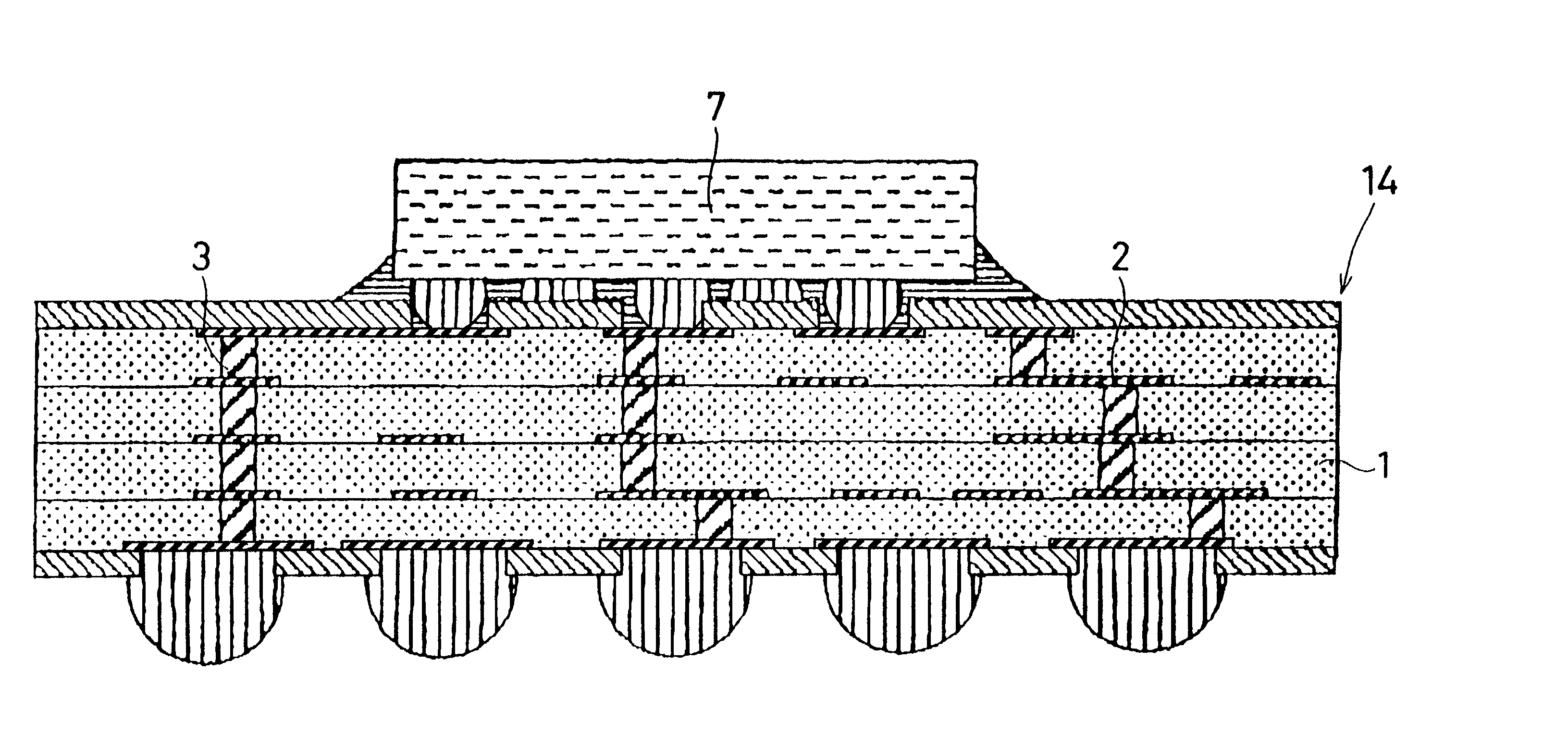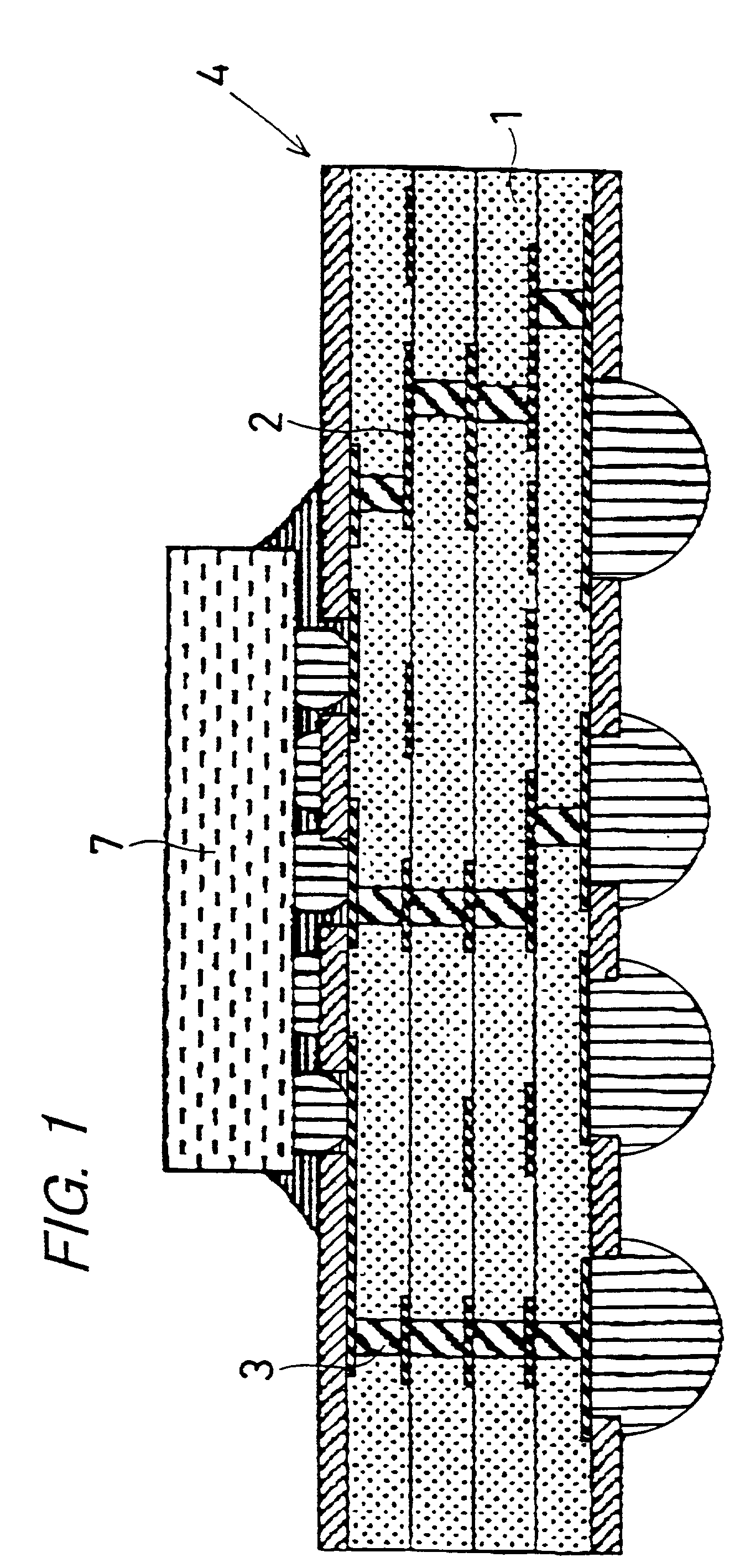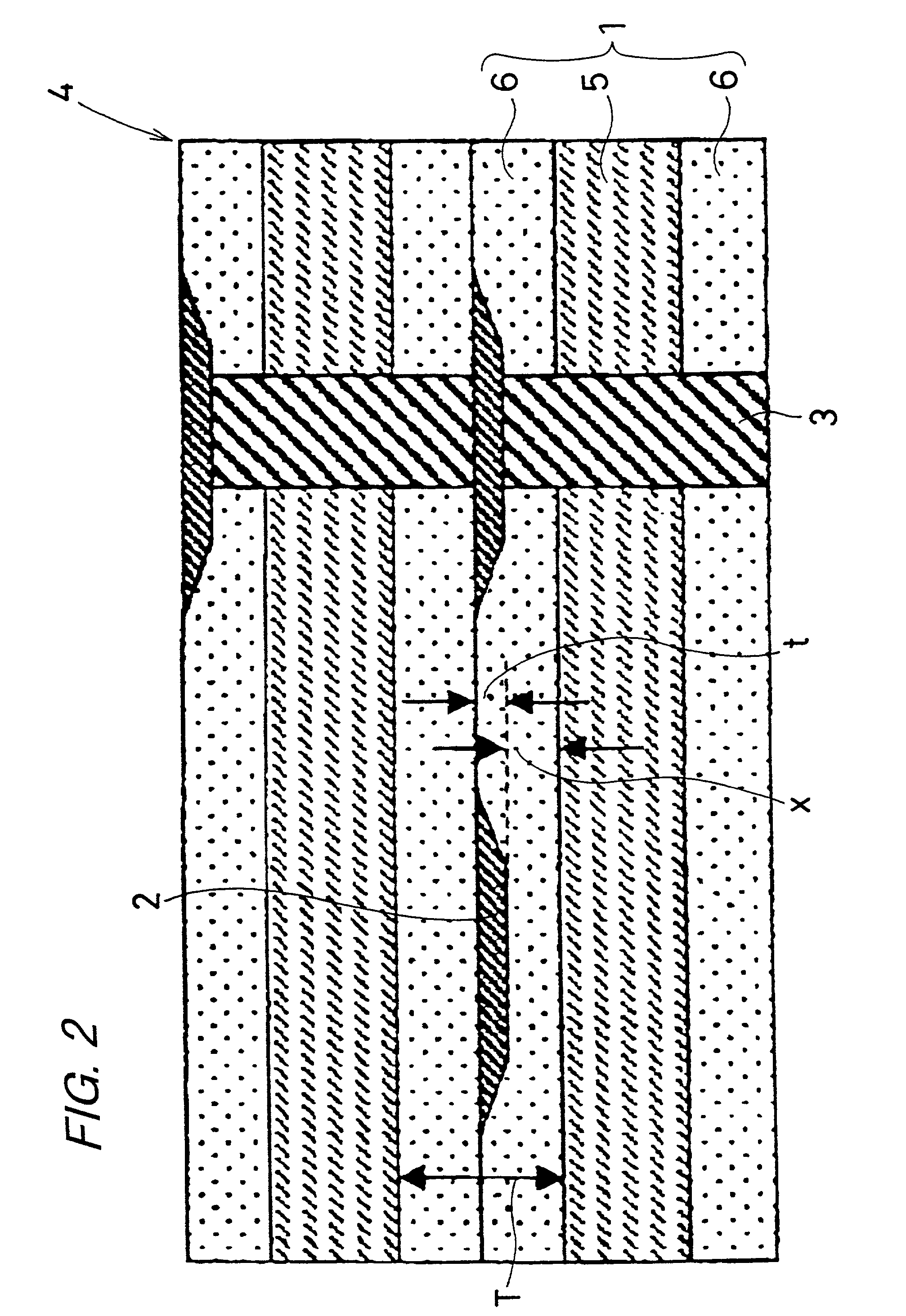Multi-layer wiring substrate
a wiring substrate and multi-layer technology, applied in the field of multi-layer wiring substrates, can solve the problems of difficult to form through-holes having a uniform pore diameter, difficult to achieve the effect of uniform dielectric layer separation, and limited through-hole minuteness
- Summary
- Abstract
- Description
- Claims
- Application Information
AI Technical Summary
Benefits of technology
Problems solved by technology
Method used
Image
Examples
second embodiment
[0102] In the first embodiment, a multi-layer wiring substrate in which a plural layers of dielectric layers each comprising cladding layers comprising a polyphenyleneether-type organic substance formed on upper and bottom surfaces of a liquid crystal polymer layer are laminated with one another was shown.
[0103] As shown in the first embodiment, in the multi-layer wiring substrate in which a plural layers of dielectric layers each comprising cladding layers comprising polyphenyleneether-type organic substance formed on upper and bottom surfaces of a liquid crystal polymer layer are laminated with one another, since coefficient of thermal expansions of the cladding layer and the liquid crystal polymer layer are different from each other, there is a tendency in which a crack is likely to be generated in the cladding layer in a temperature cycle test which includes a sharp temperature change. Further, there is a method of preventing such crack from being generated in the temperature cy...
example 2
[0131] First, spherical fused silica having an average particle diameter of 0.6 .mu.m was added to a thermosetting-type polyphenyleneether resin such that a content thereof becomes 70% by volume on a dry basis to produce a mixture and, then, toluene as a solvent and a catalyst for acceleration of setting of the organic resin were added to the thus-prepared mixture and agitated for one hour to prepare a paste. Subsequently, a surface of a liquid crystal polymer layer having a melting point of 320.degree. C. was subjected to plasma processing to prepare the liquid crystal polymer layer having a thickness of 35 .mu.m and a center line average roughness Ra of 0.10 .mu.m and, then, the paste was coated on an upper surface of the thus-prepared liquid crystal polymer layer by a doctor blade method to form a first layer comprising a thermosetting-type polyphenyleneether having a thickness of about 10 .mu.m on a dry basis. Thereafter, the paste which has been adjusted such that a content of ...
third embodiment
[0144] FIG. 5 is a cross-sectional view of a mixed integrated circuit comprising a semiconductor device mounted on a multi-layer wiring substrate according to a third embodiment of the present invention and FIG. 6 is a enlarged cross-sectional view of a substantial portion of the multi-layer wiring substrate shown in FIG. 5. In this embodiment, parts corresponding to the above-mentioned embodiment are denoted same numerals and explanations with respect to the mare omitted. In these figures, reference numerals 21, 2 and 3 denote a dielectric layer, a wiring conductor and a through conductor, respectively and a multi-layer wiring substrate 24 according to the invention is primarily constructed by these portions. Further, in the present embodiment, the multi-layer wiring substrate 24 comprising 4 layers of the dielectric layers 21 laminated with one another is shown for an illustrative purpose only and by no means for limiting it.
[0145] The dielectric layer 21, which comprises a liquid...
PUM
| Property | Measurement | Unit |
|---|---|---|
| Young's modulus | aaaaa | aaaaa |
| Young's modulus | aaaaa | aaaaa |
| contact angle | aaaaa | aaaaa |
Abstract
Description
Claims
Application Information
 Login to View More
Login to View More - R&D
- Intellectual Property
- Life Sciences
- Materials
- Tech Scout
- Unparalleled Data Quality
- Higher Quality Content
- 60% Fewer Hallucinations
Browse by: Latest US Patents, China's latest patents, Technical Efficacy Thesaurus, Application Domain, Technology Topic, Popular Technical Reports.
© 2025 PatSnap. All rights reserved.Legal|Privacy policy|Modern Slavery Act Transparency Statement|Sitemap|About US| Contact US: help@patsnap.com



